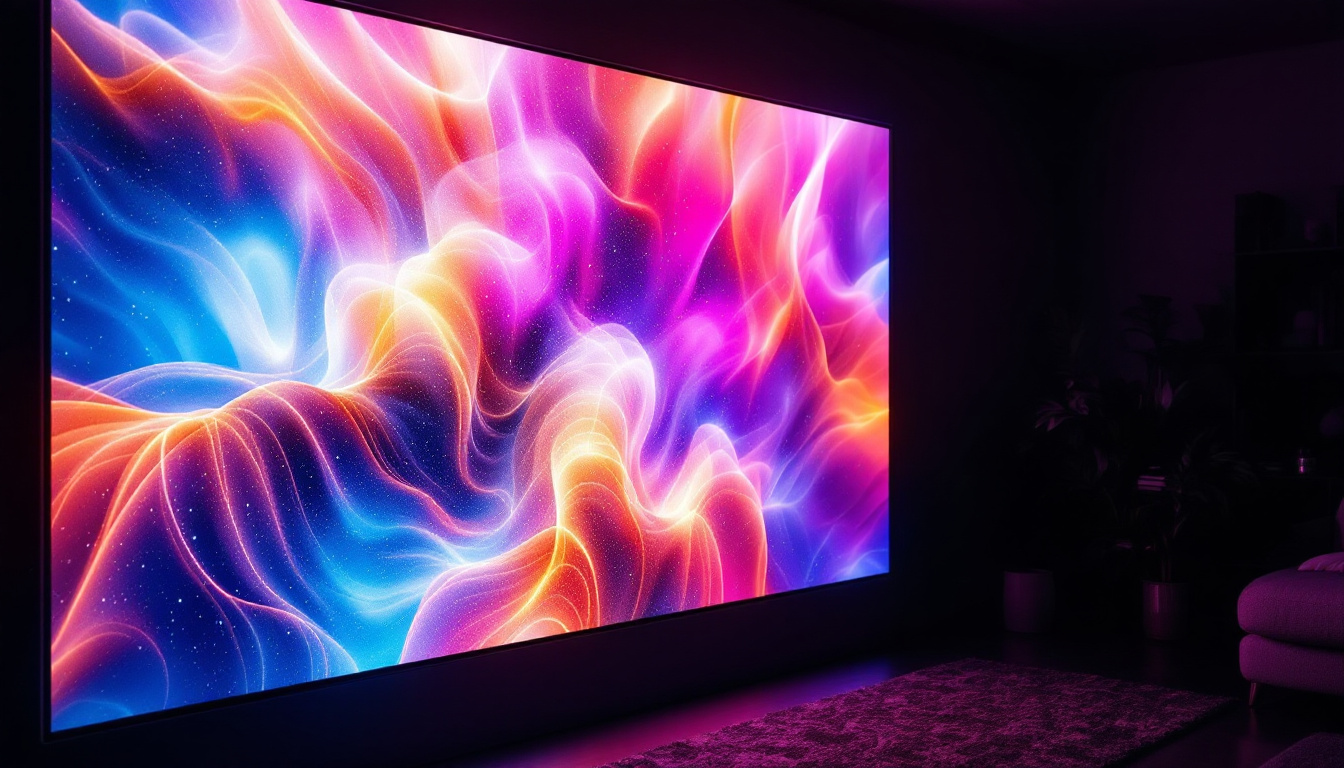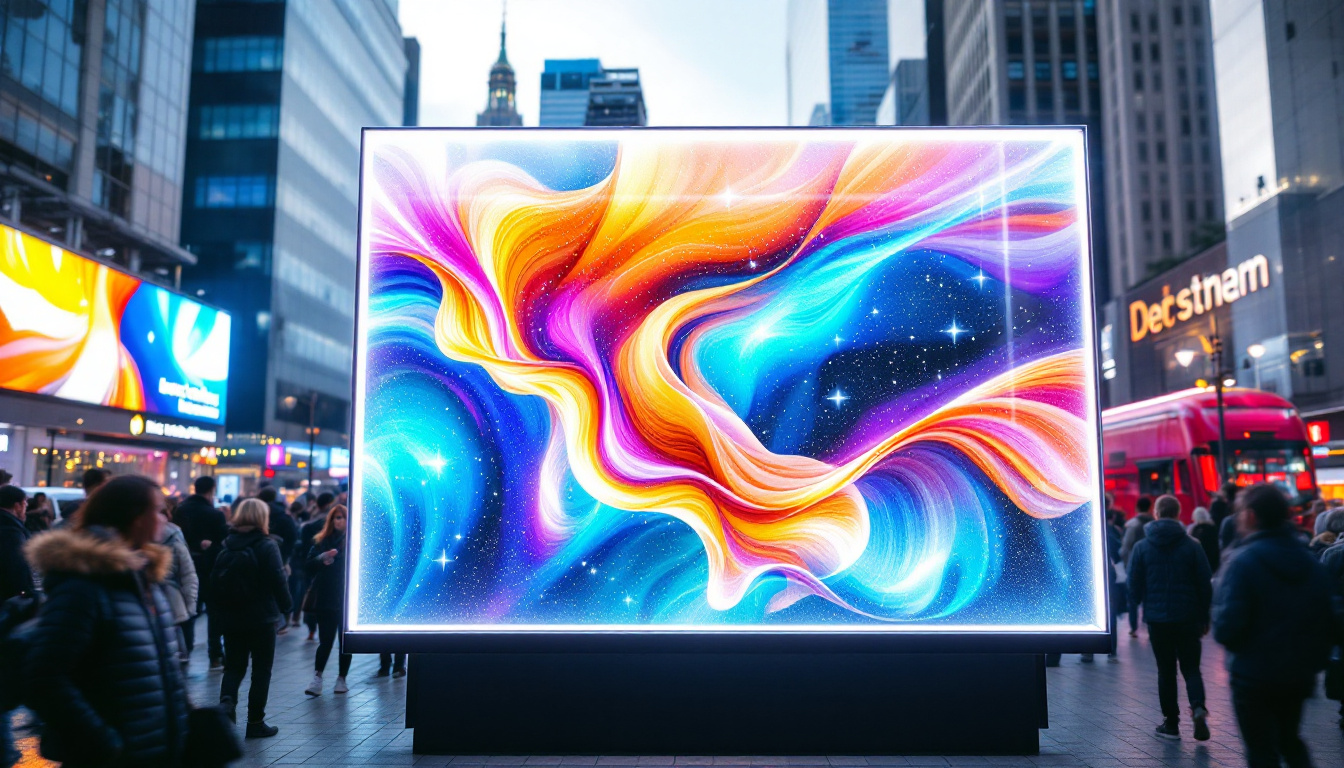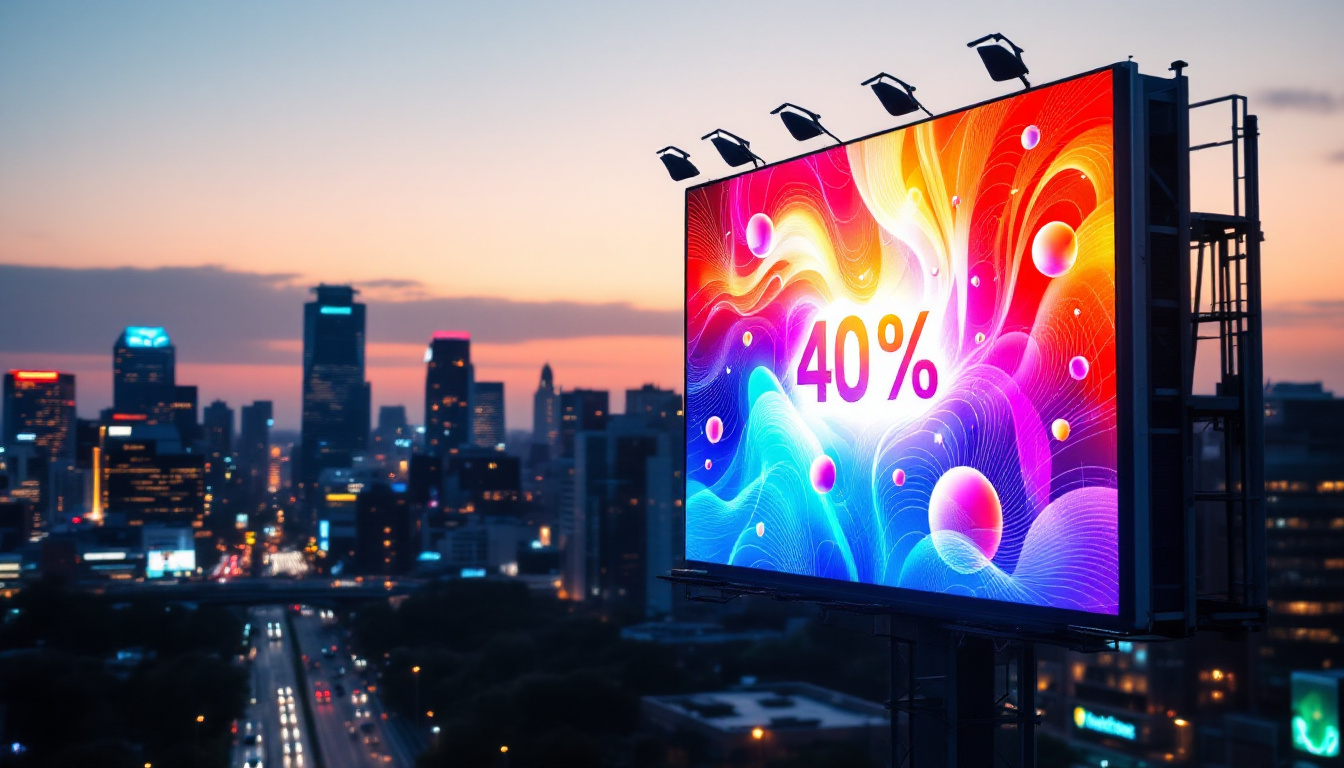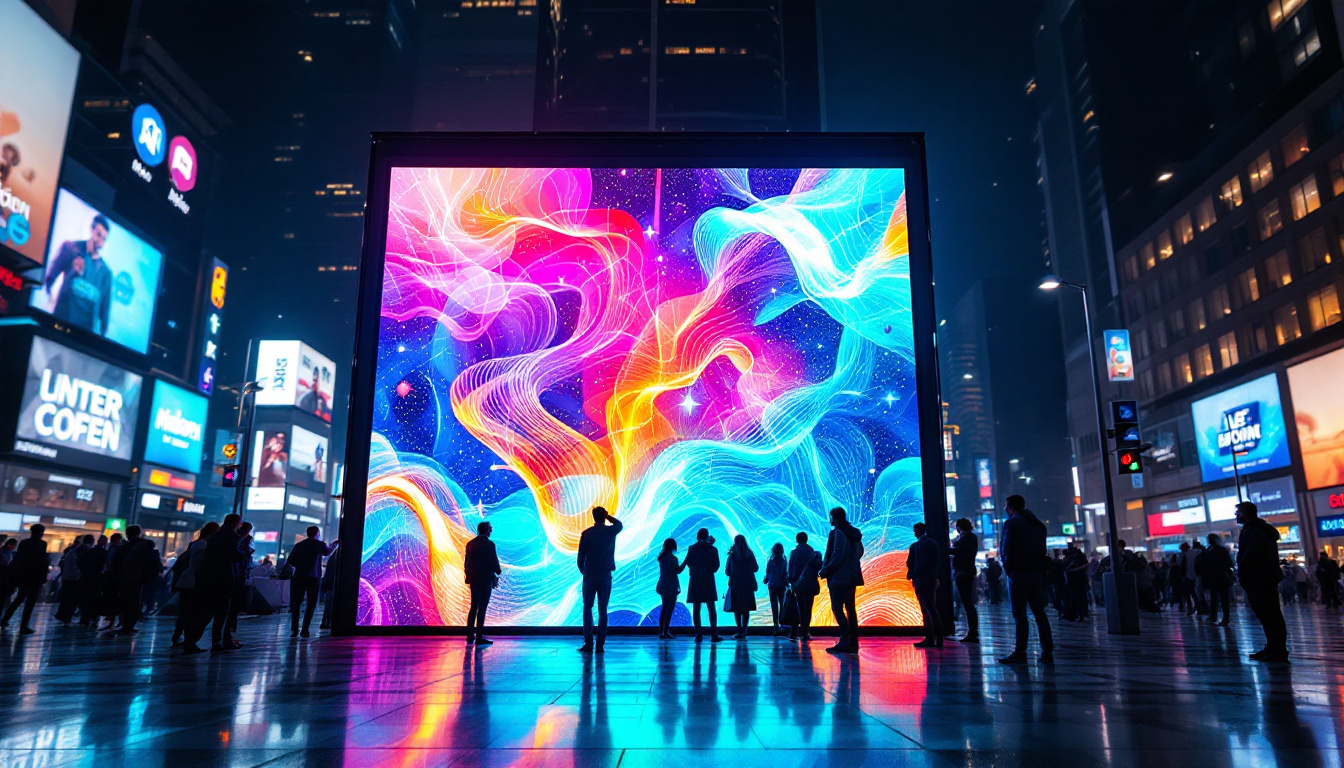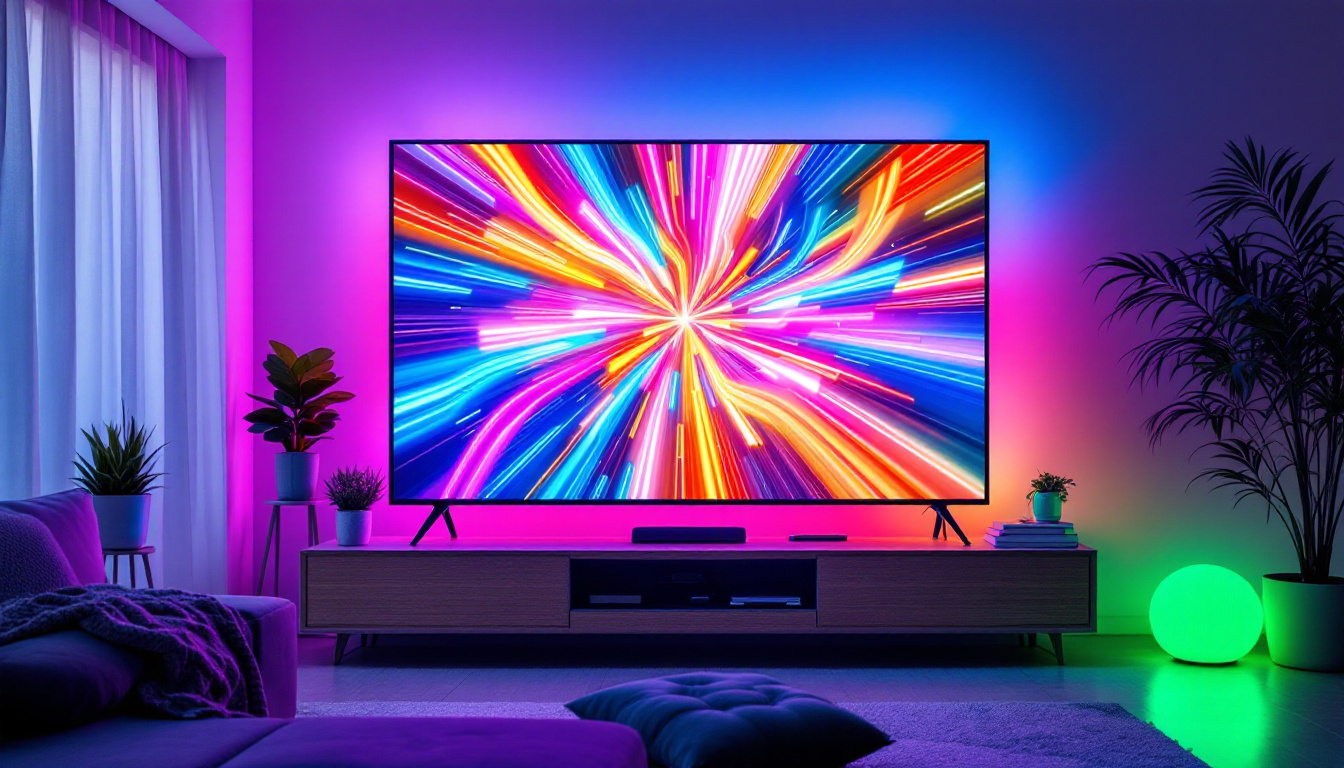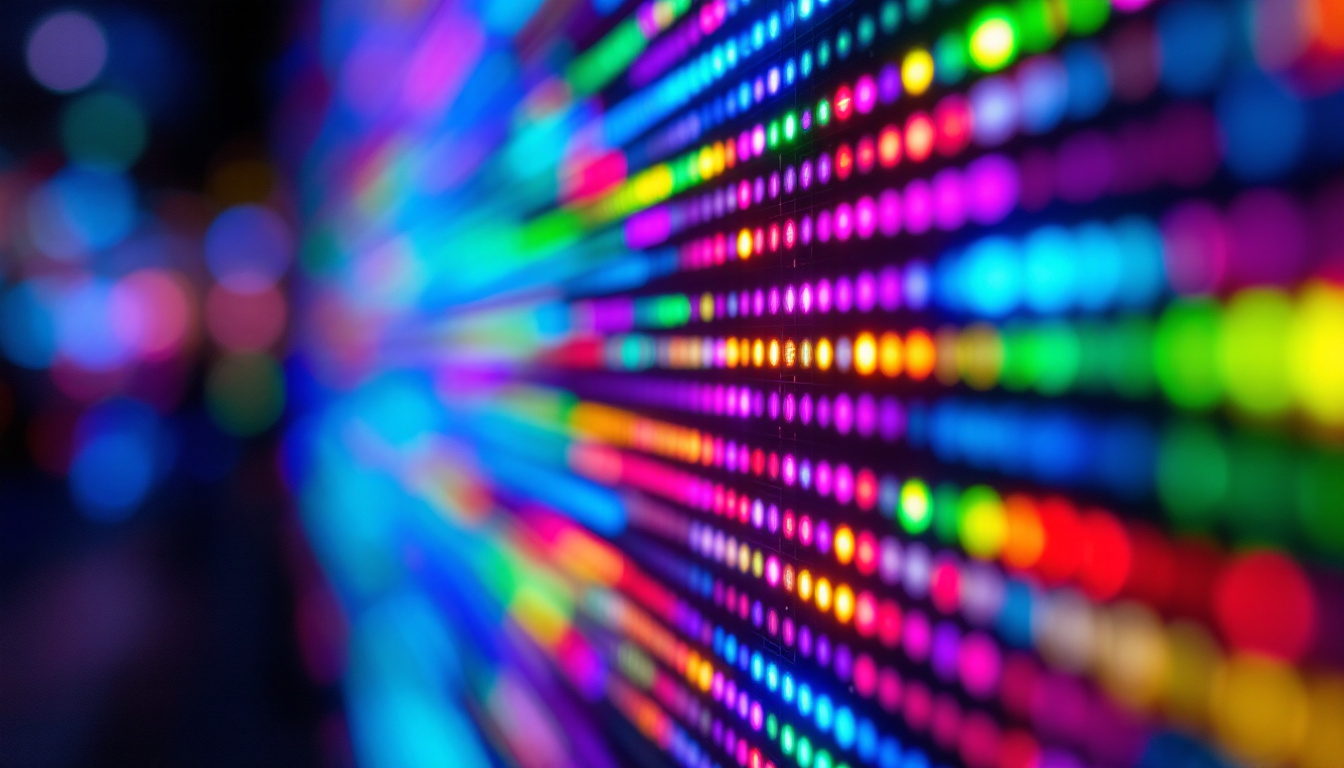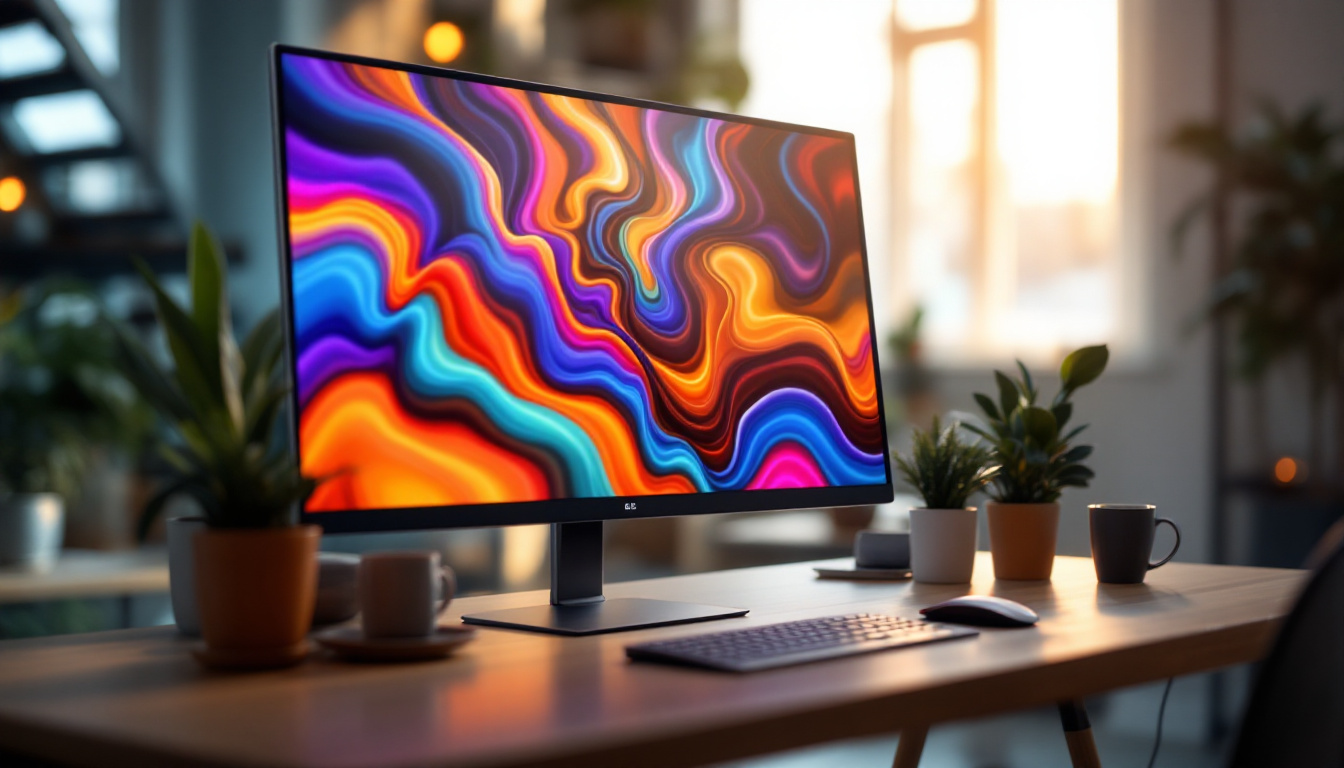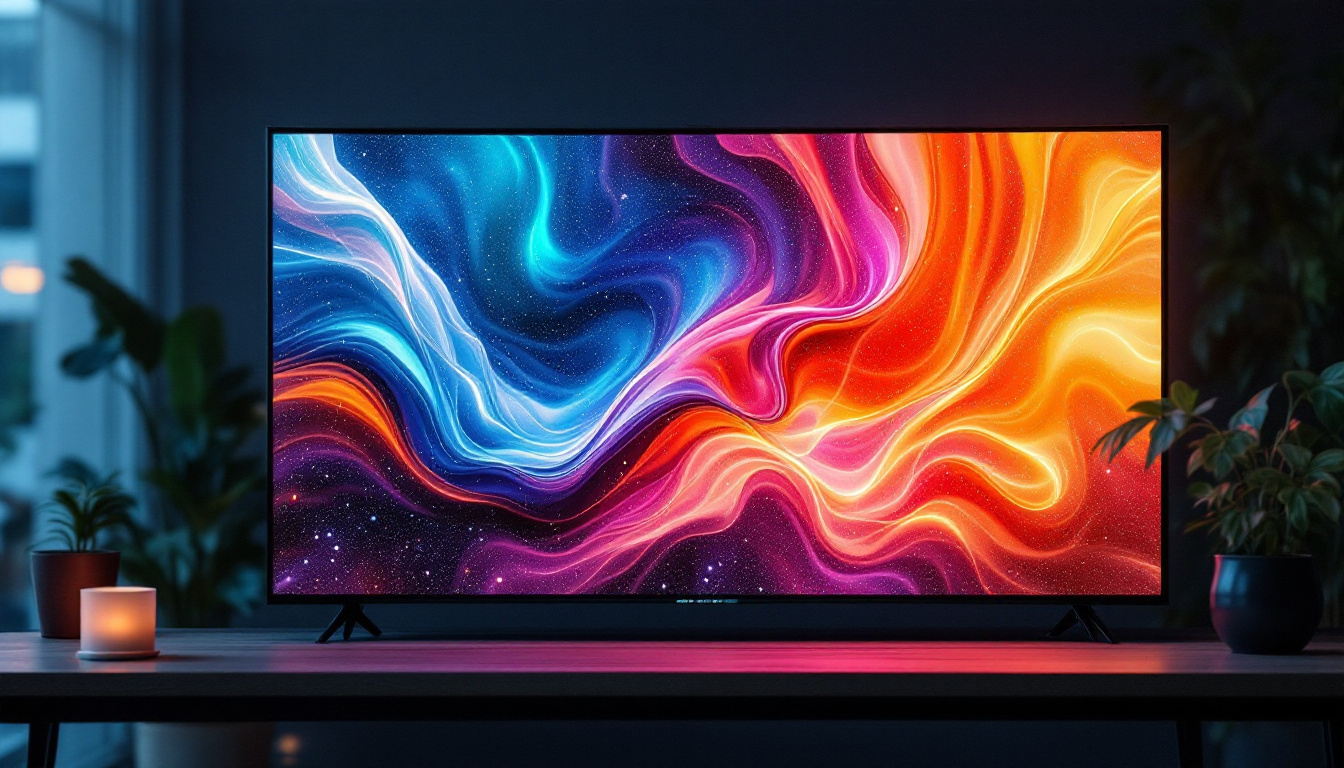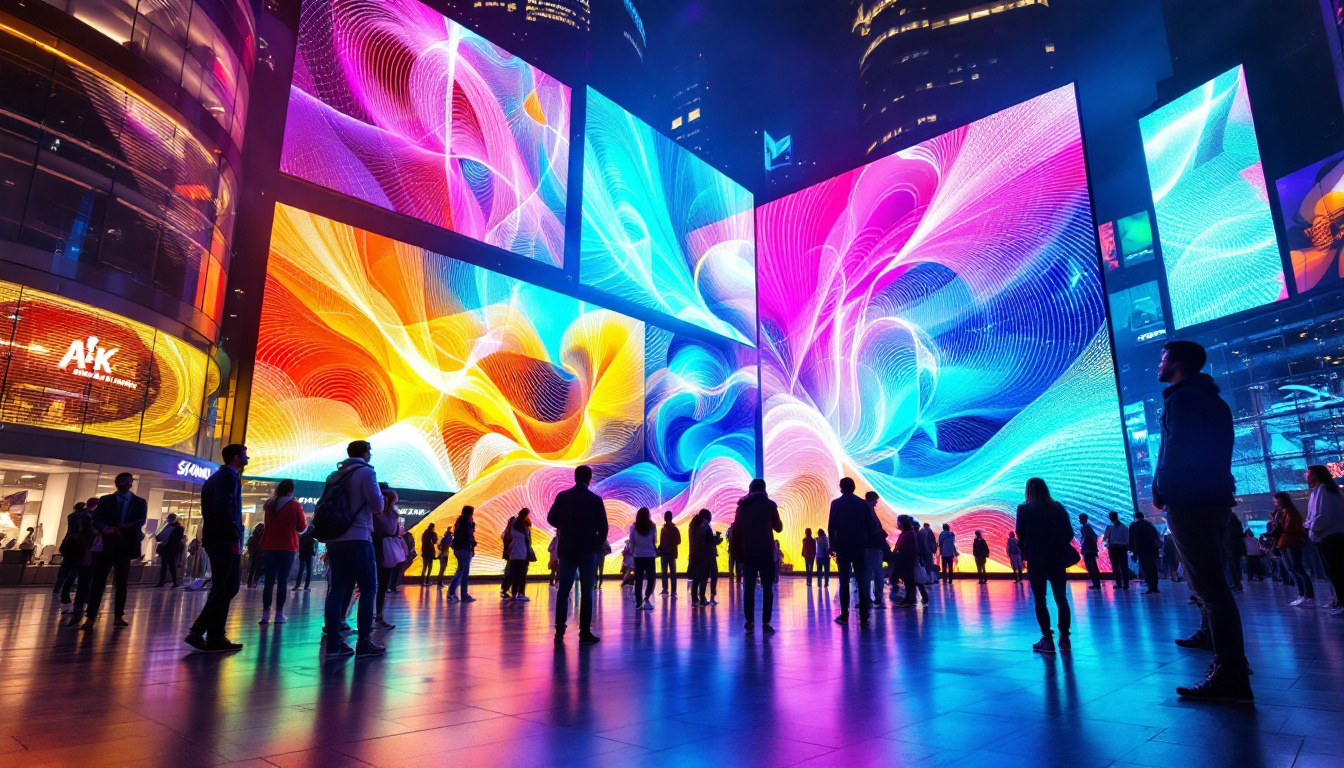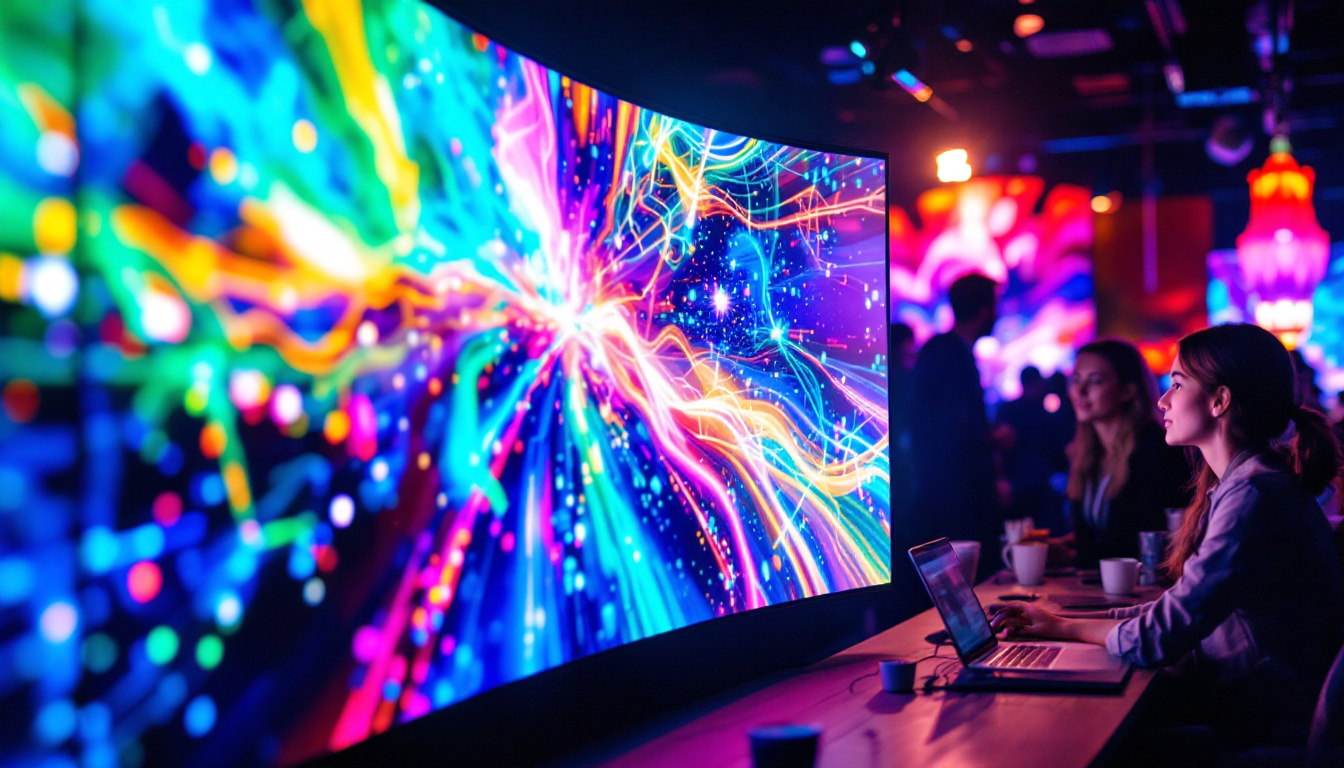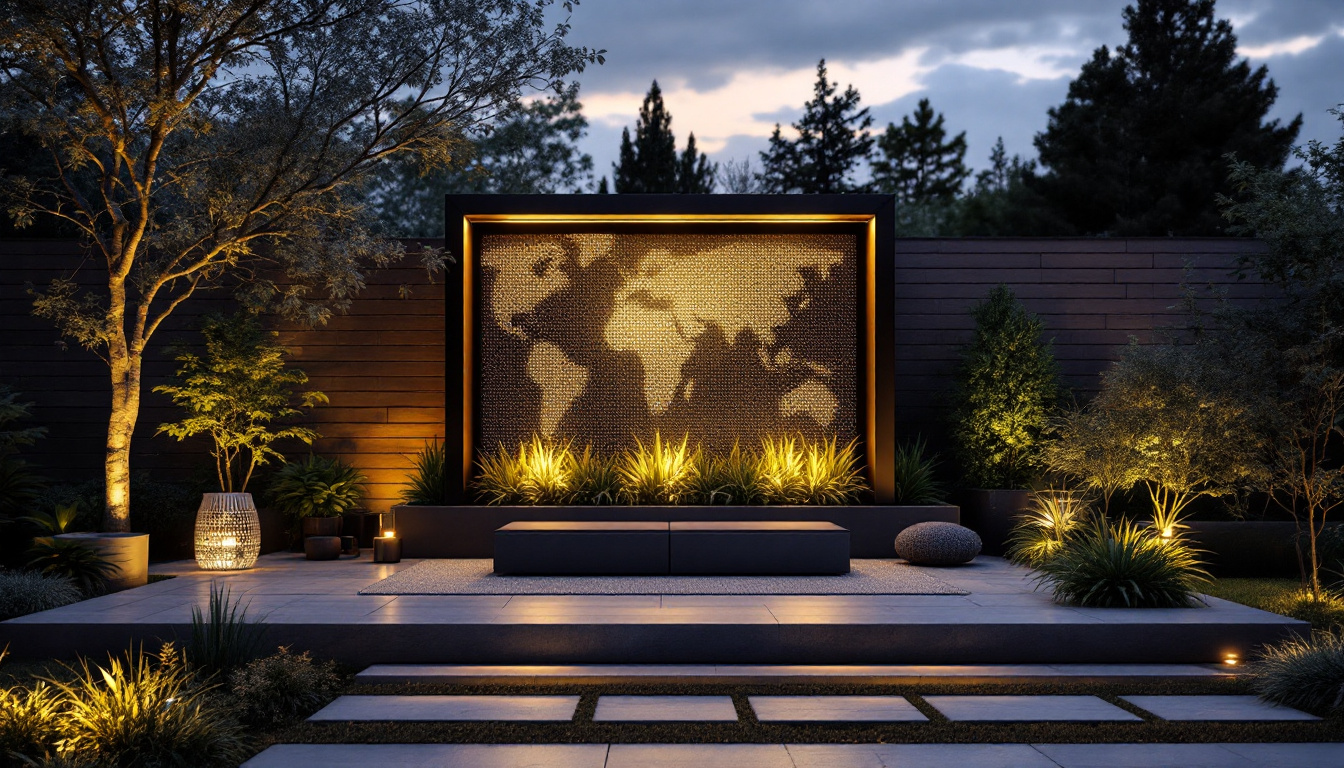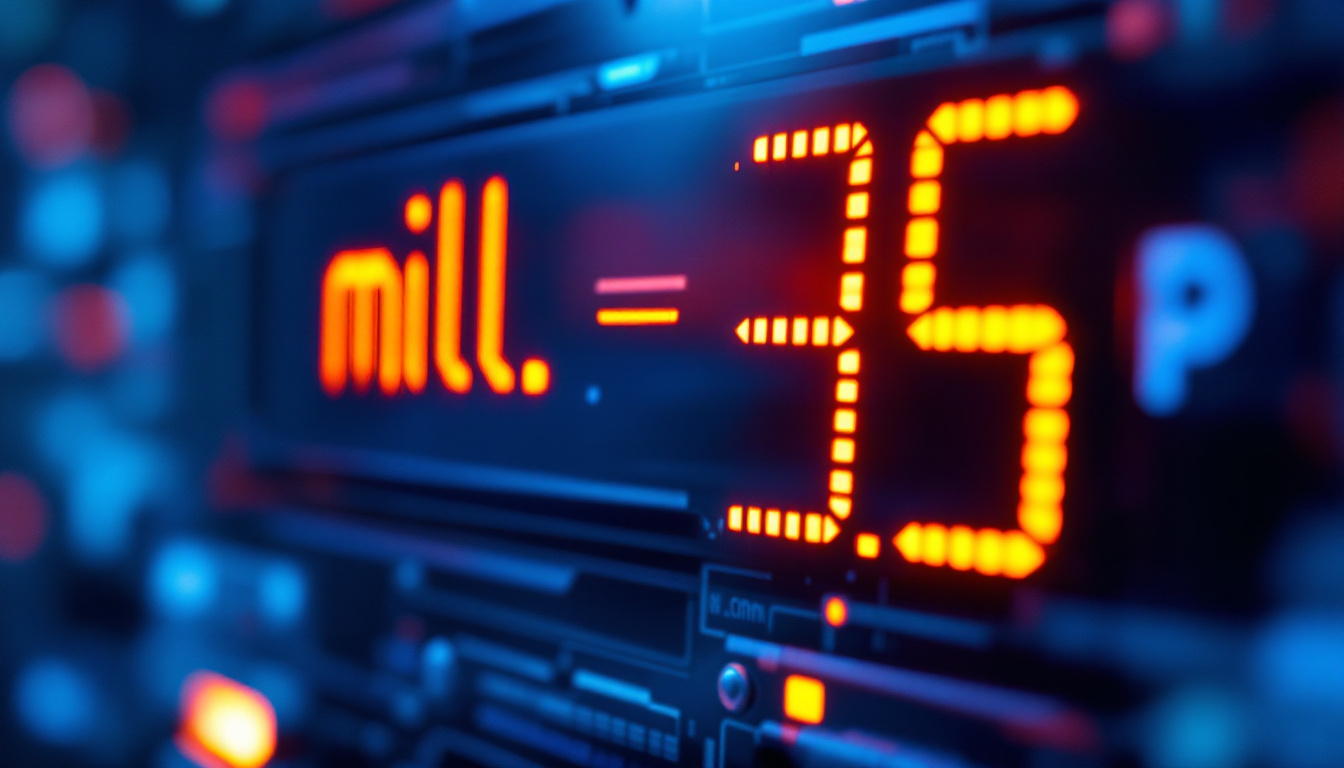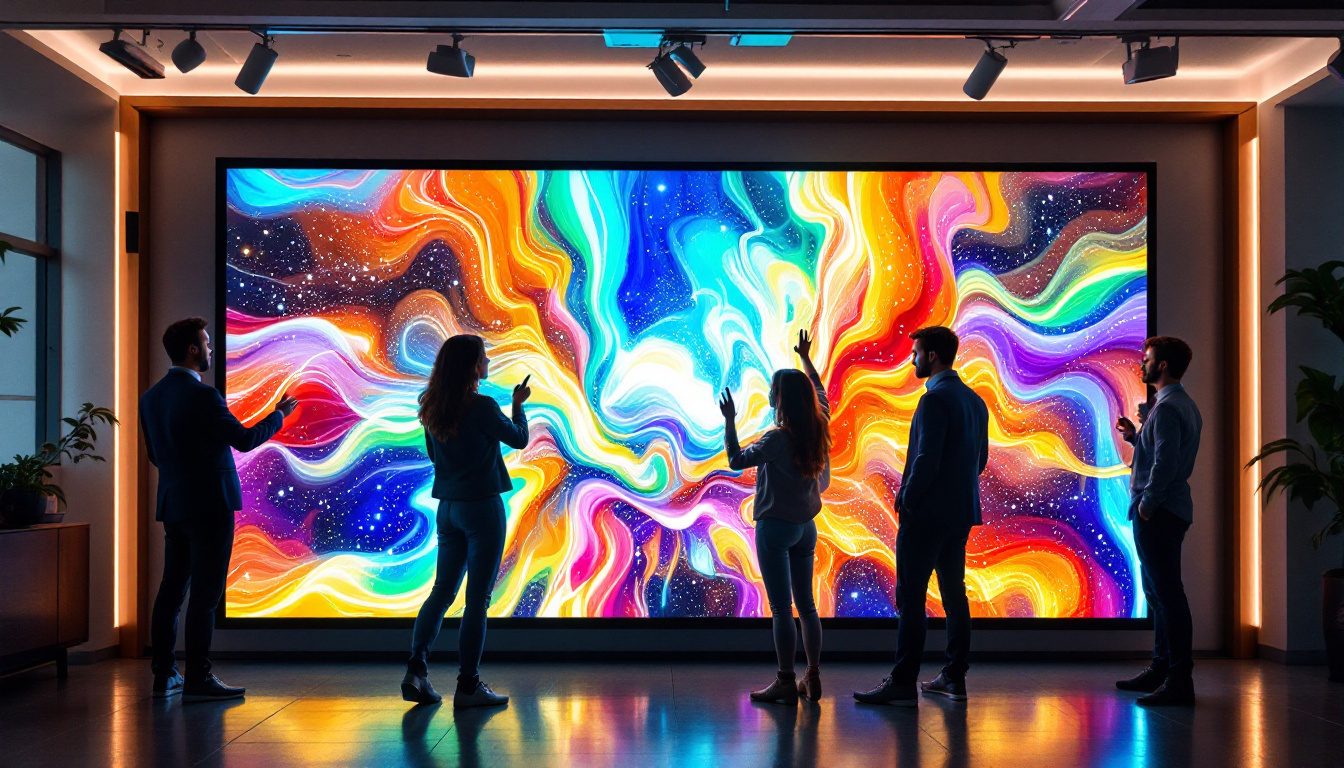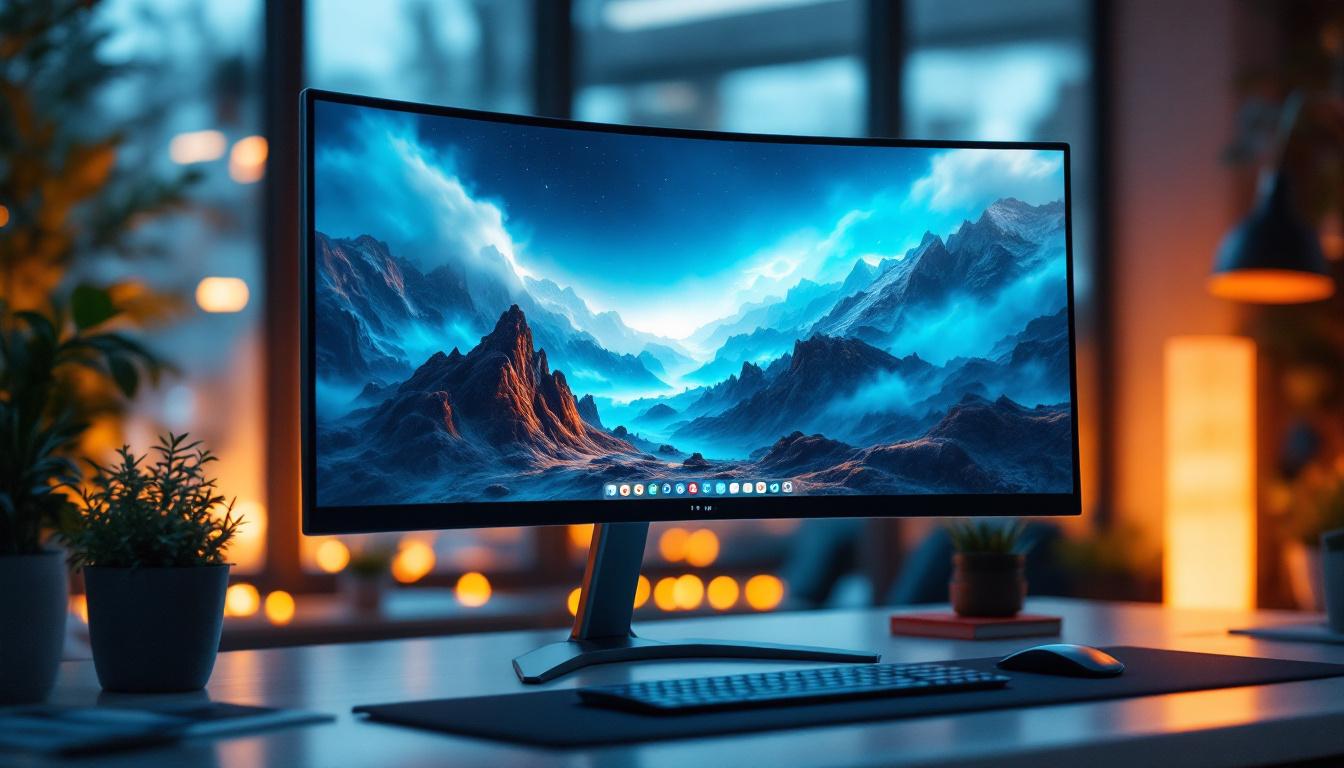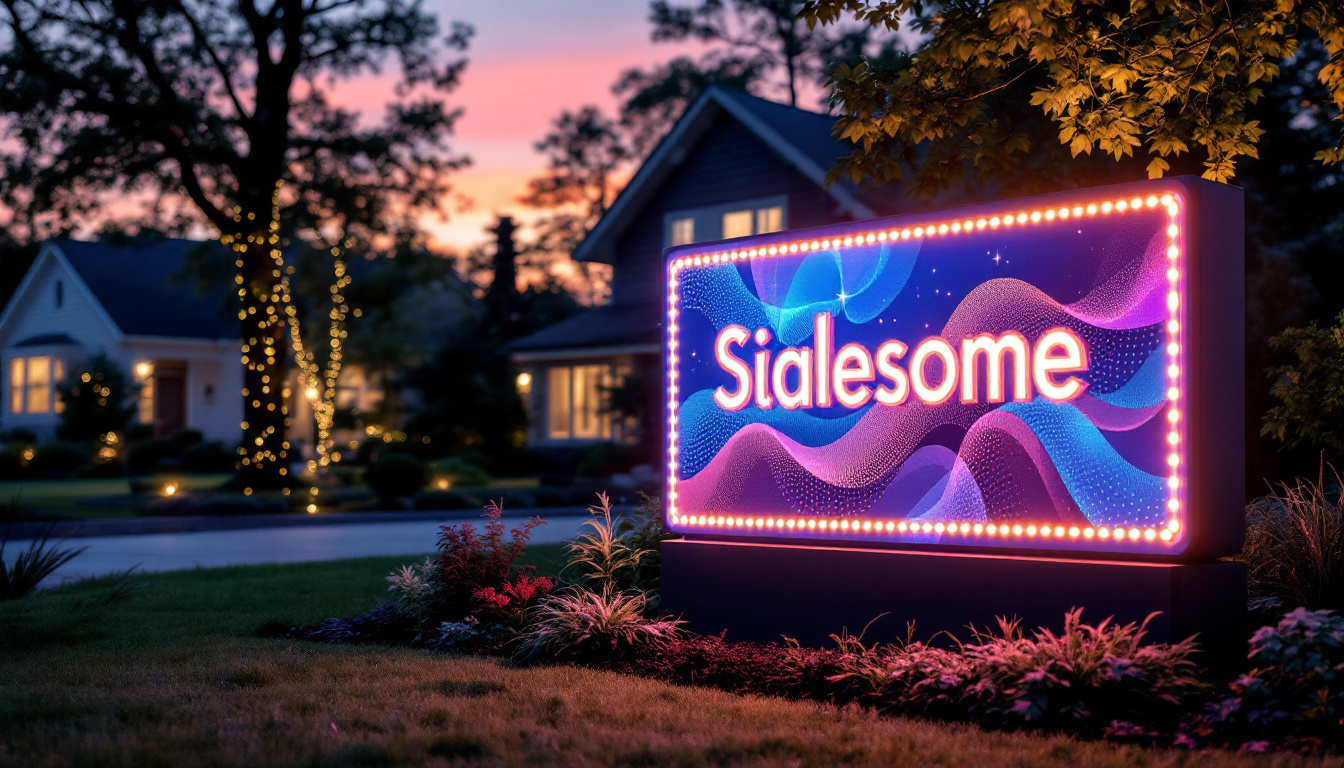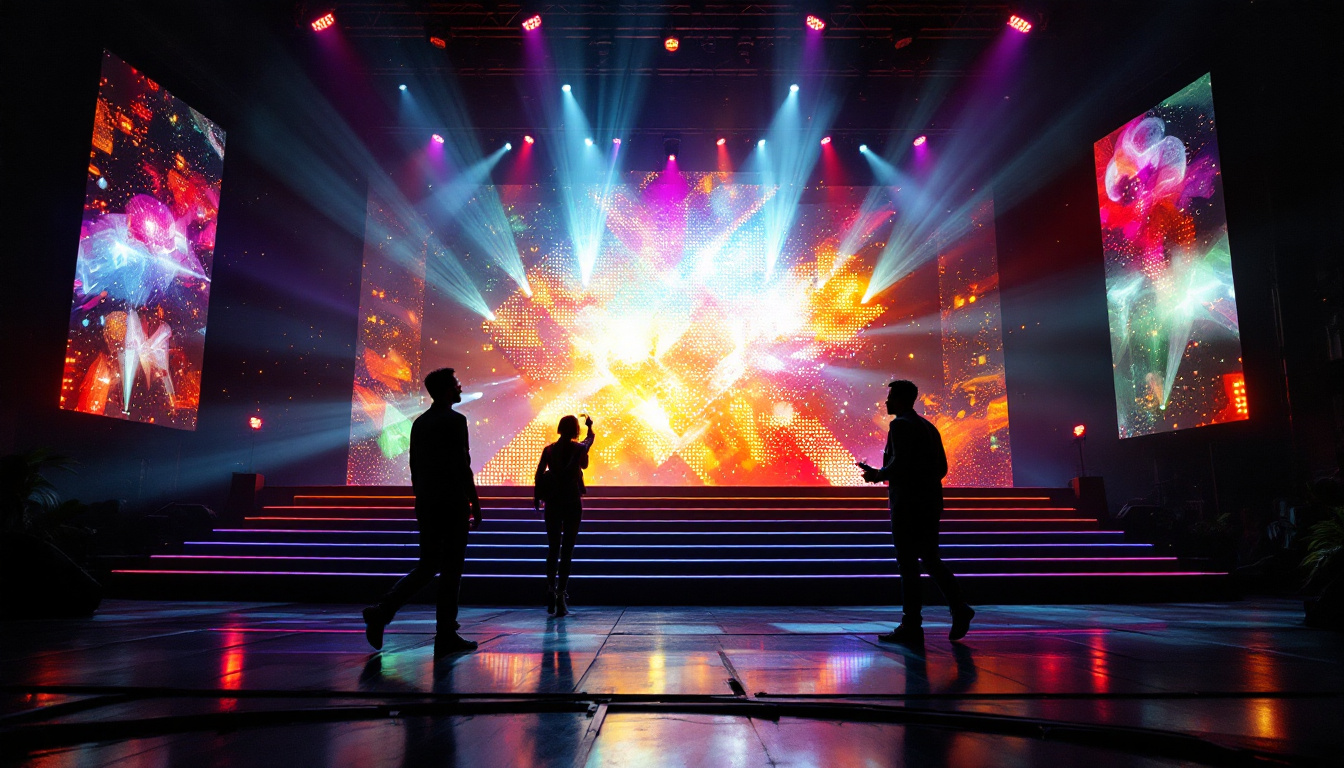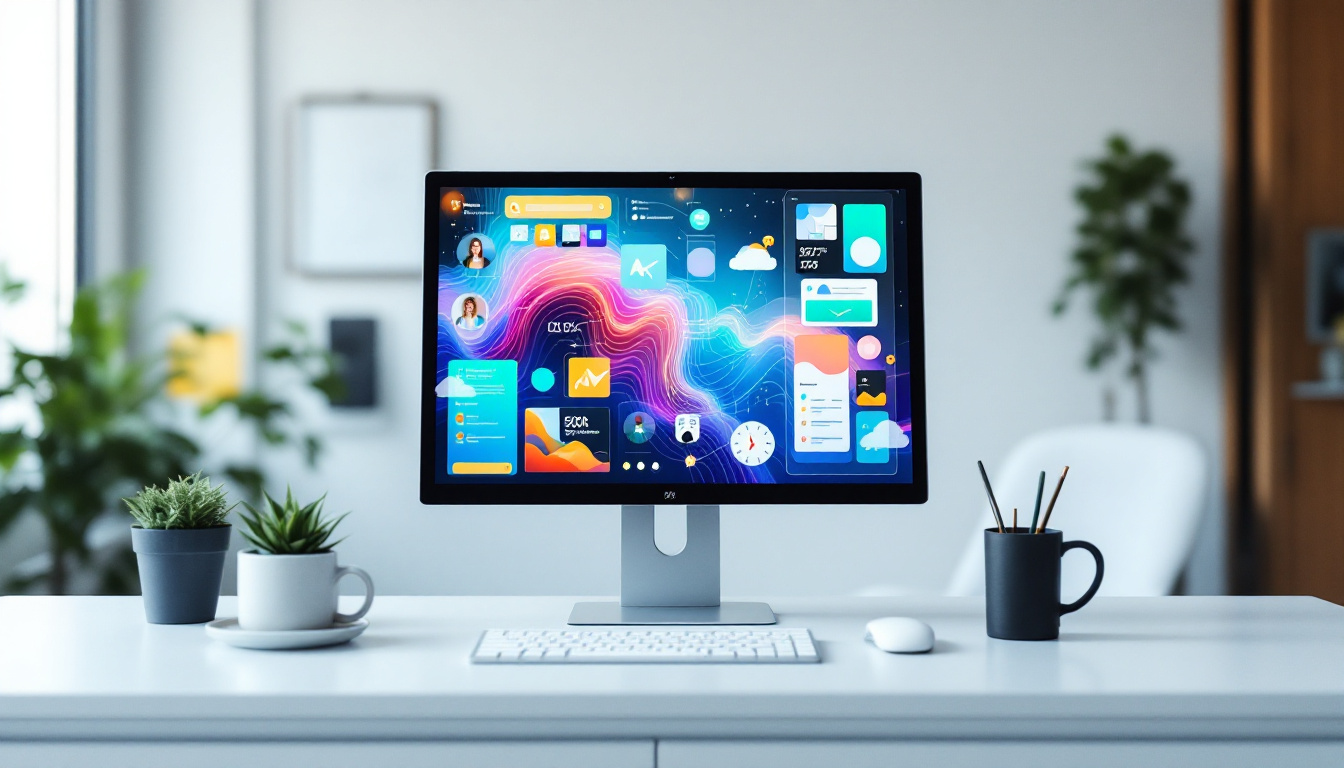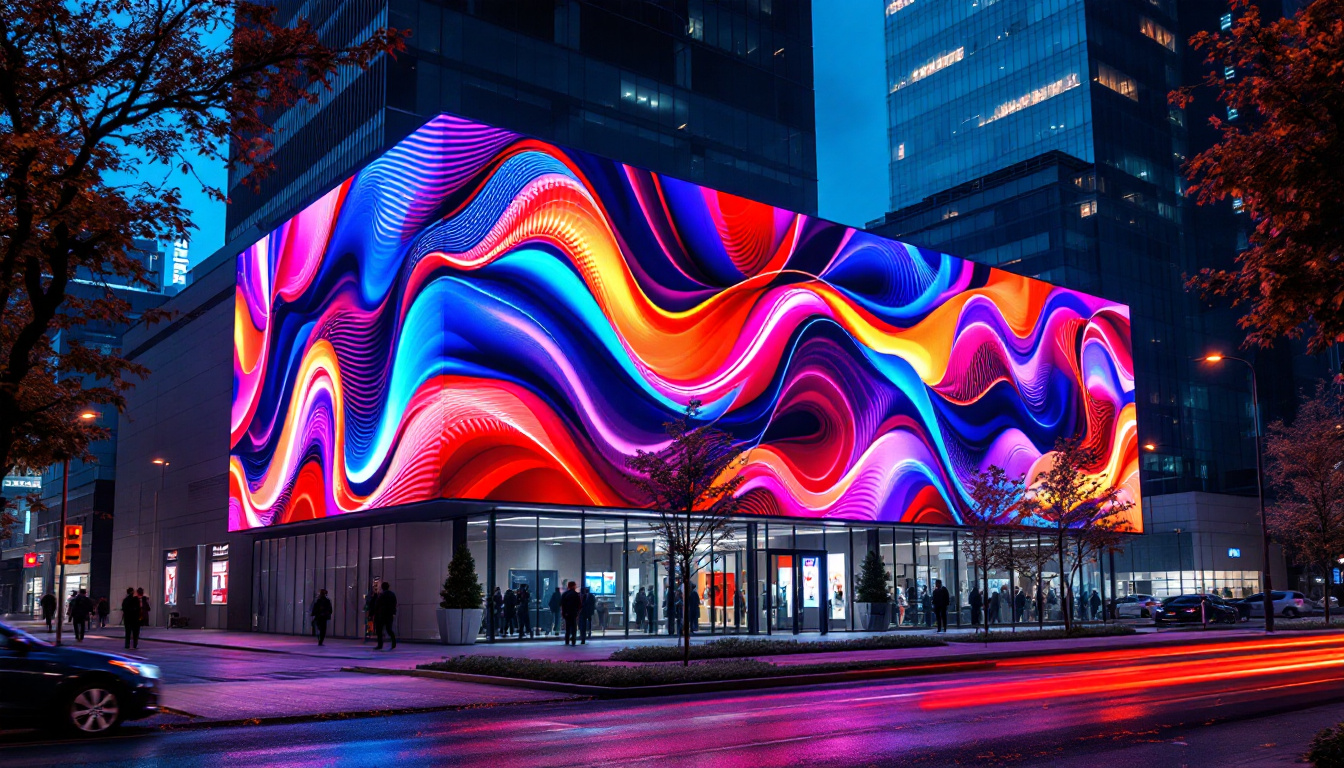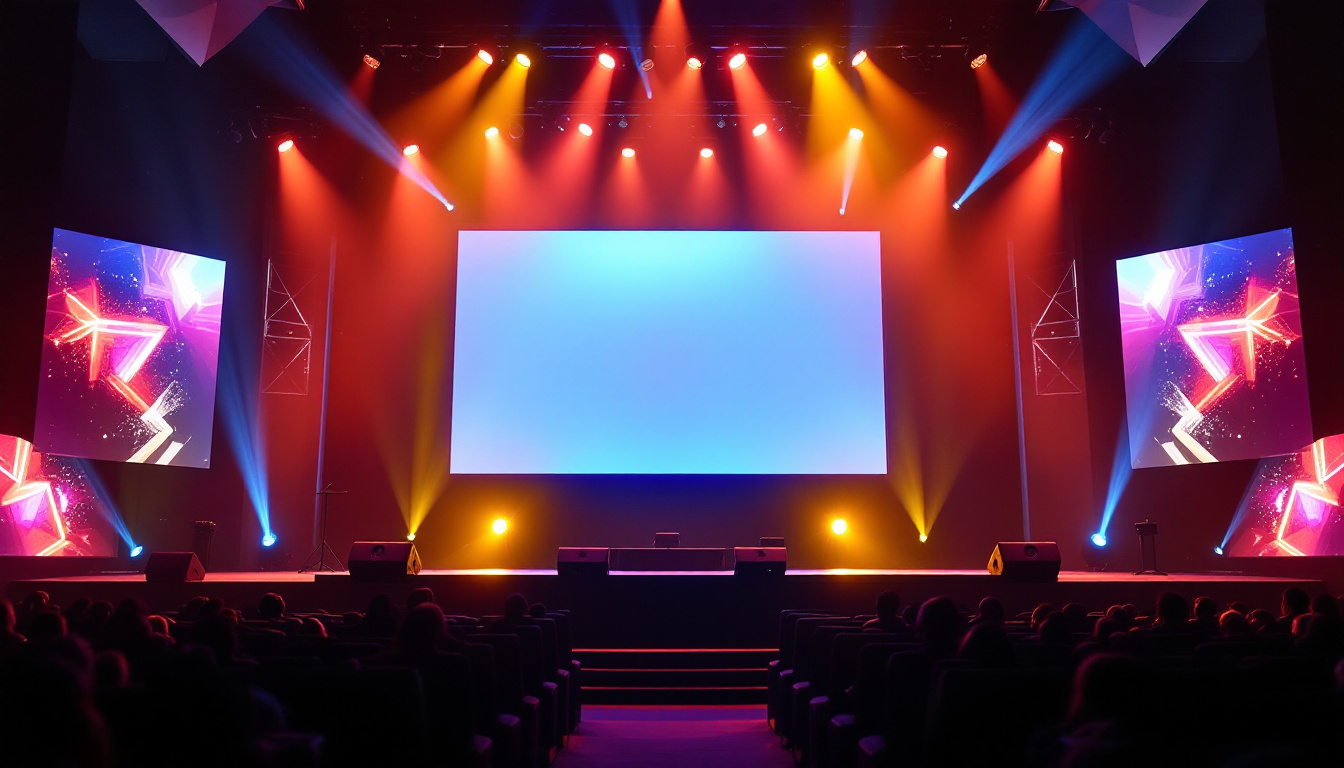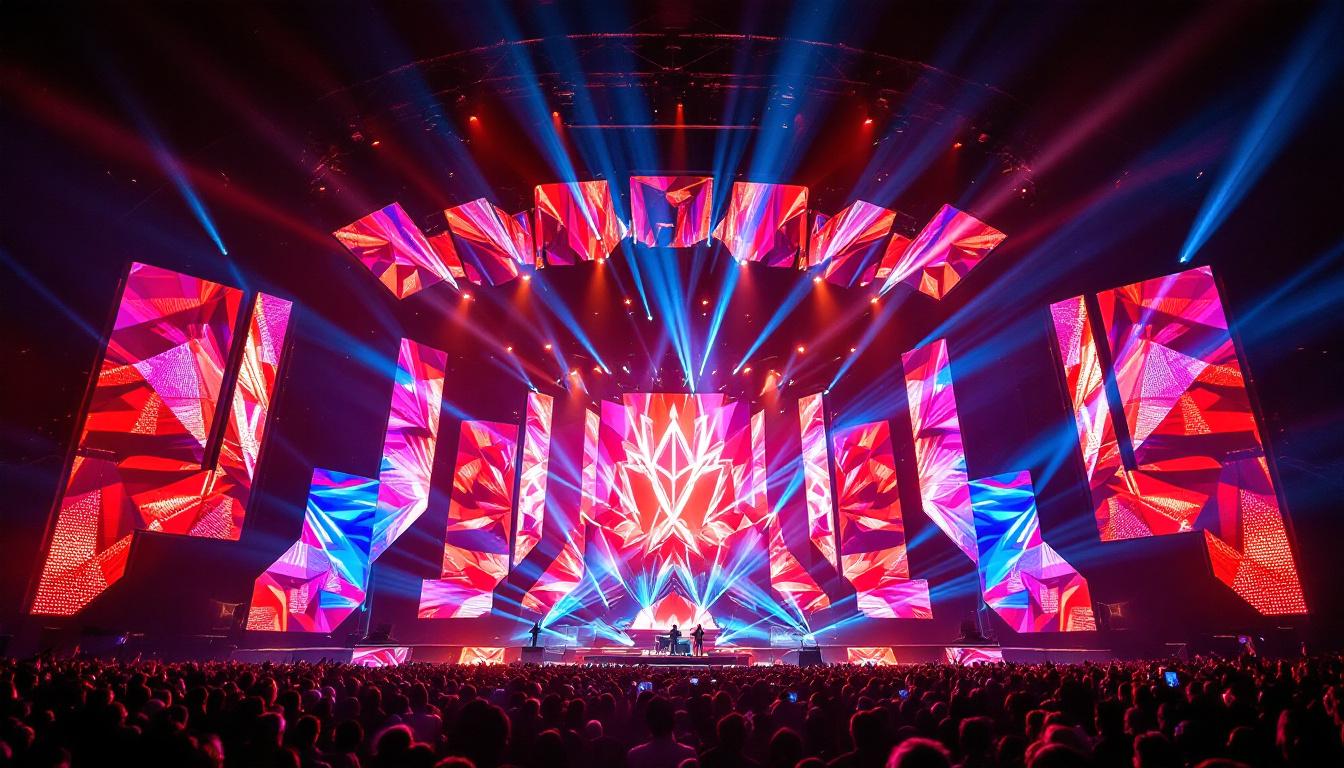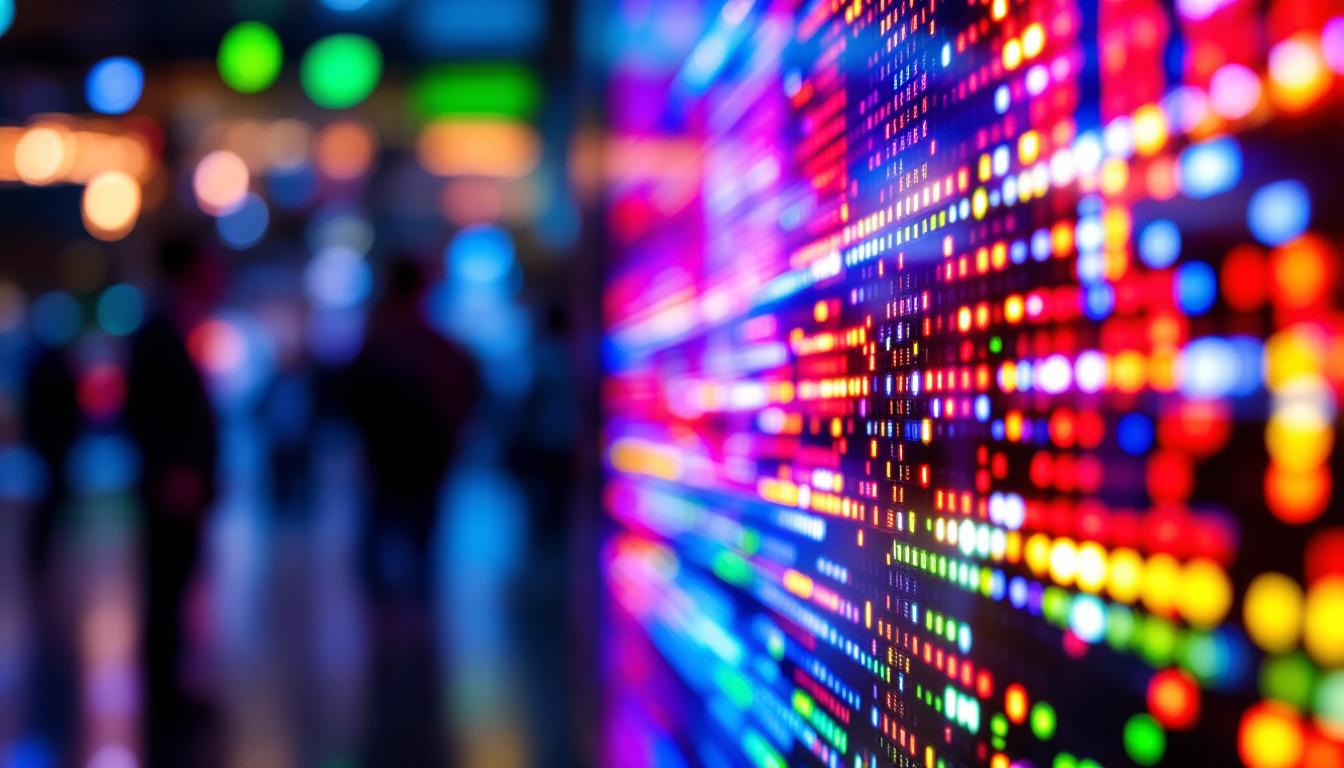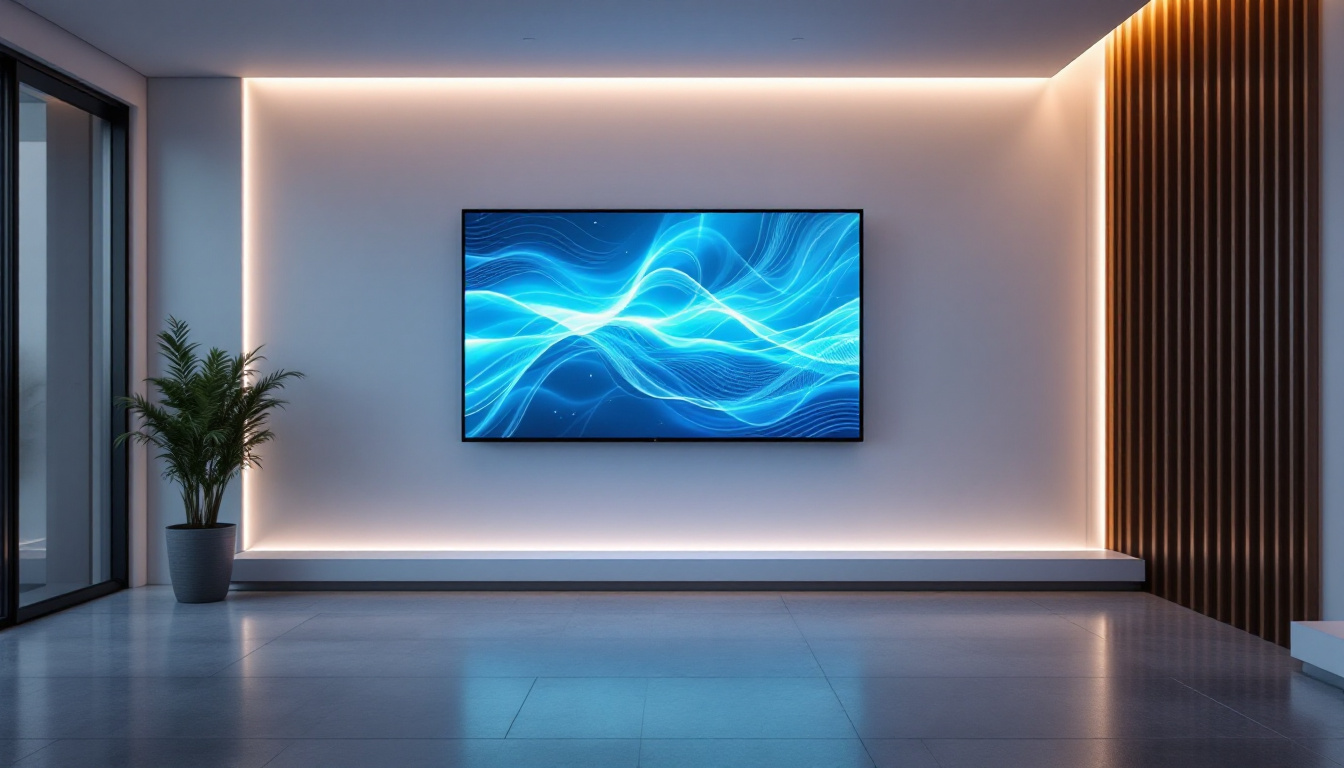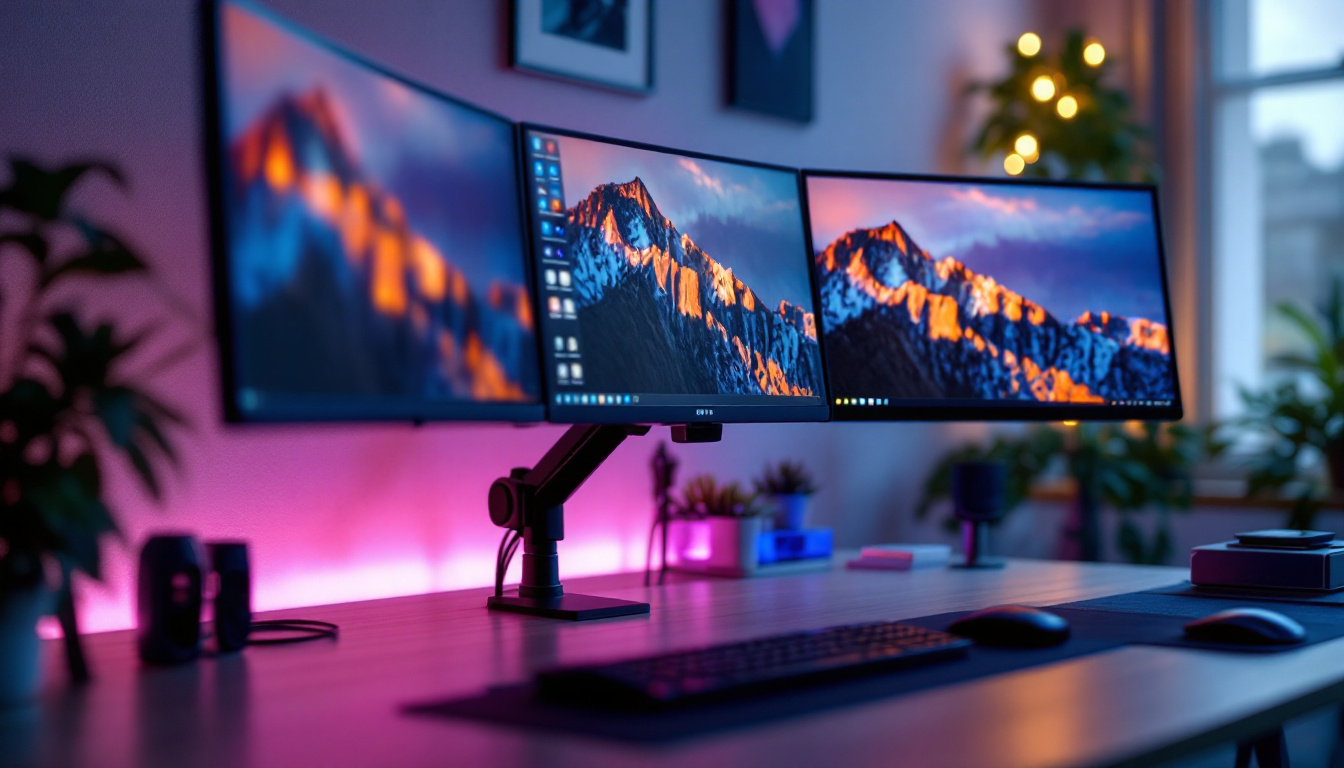In the realm of visual technology, projector screens have undergone significant evolution, particularly with the advent of LED displays. These screens have transformed how presentations, movies, and events are experienced, offering vibrant colors, enhanced brightness, and improved durability. This article delves into the intricacies of LED projector screens, exploring their technology, benefits, and applications.
Understanding LED Technology
LED, or Light Emitting Diode, is a semiconductor device that emits light when an electric current passes through it. This technology has become increasingly popular in various display formats, including televisions, monitors, and projector screens. The shift towards LED displays is driven by their efficiency, longevity, and superior image quality. Compared to traditional incandescent bulbs, LED lights consume significantly less energy, which not only reduces electricity bills but also minimizes environmental impact. This energy efficiency is a key factor in the growing adoption of LED technology across different sectors, from residential to commercial and industrial applications.
How LED Works
At its core, LED technology operates through a series of diodes that emit light in response to electrical energy. Unlike traditional projection methods that rely on bulbs, LED screens utilize clusters of tiny diodes that create images by combining red, green, and blue light. This method allows for a broader color spectrum and more precise color reproduction, resulting in stunning visuals. Additionally, the compact size of LEDs enables manufacturers to create thinner and lighter displays, which is particularly advantageous in modern design aesthetics where space-saving solutions are in high demand.
Moreover, LED screens can be designed to be either front or rear projection screens. Front projection screens are typically used in standard setups, while rear projection screens allow for a more versatile viewing experience, making them ideal for certain environments like trade shows or large events. The flexibility of LED technology also extends to its adaptability in various lighting conditions, ensuring that images remain vibrant and clear even in brightly lit environments. This capability has made LED projectors a favorite choice for educational institutions and corporate settings, where presentations often need to compete with ambient light.
Types of LED Projector Screens
LED projector screens come in various types, each tailored for specific applications. The most common types include:
- Fixed Frame Screens: These are permanently installed screens that provide a flat surface for projection. They are often used in home theaters and dedicated presentation spaces, offering a seamless viewing experience that enhances the overall aesthetic of the room.
- Motorized Screens: These screens can be easily retracted or lowered with a remote control, making them suitable for multi-purpose rooms. Their convenience allows users to transform a space quickly, accommodating different activities without the need for cumbersome setup processes.
- Portable Screens: Designed for ease of transport, portable screens are ideal for business presentations or outdoor events. Many models come with lightweight frames and carrying cases, ensuring that users can set up and dismantle their display quickly, making them perfect for on-the-go professionals.
In addition to these common types, there are also specialized screens designed for specific environments, such as ambient light rejecting screens that enhance picture quality in well-lit rooms. These innovations reflect the ongoing evolution of LED technology, as manufacturers continue to push the boundaries of what is possible in display technology. With advancements in resolution and color accuracy, LED projector screens are becoming increasingly sophisticated, catering to the demands of both casual viewers and professional users alike.
Advantages of LED Projector Screens
The transition to LED projector screens offers a multitude of advantages that enhance the viewing experience. From improved brightness to energy efficiency, these screens are paving the way for modern visual technology.
Enhanced Brightness and Contrast
One of the standout features of LED projector screens is their ability to produce brighter images with higher contrast ratios. This is particularly beneficial in environments with ambient light, where traditional screens may struggle to deliver clear visuals. The vibrant colors and deep blacks provided by LED technology ensure that images remain sharp and engaging, regardless of the lighting conditions.
Energy Efficiency and Longevity
LED displays are significantly more energy-efficient compared to their traditional counterparts. This efficiency translates to lower electricity bills and a reduced carbon footprint, making them an environmentally friendly choice. Additionally, LED screens boast a longer lifespan, often exceeding 50,000 hours of use, which means less frequent replacements and maintenance costs.
Applications of LED Projector Screens
The versatility of LED projector screens allows them to be used in a wide range of applications, from home theaters to corporate environments. Understanding these applications can help users make informed decisions about their display needs.
Home Theaters
For home theater enthusiasts, LED projector screens provide an immersive viewing experience that rivals commercial cinemas. The bright, vibrant images enhance movie nights, gaming sessions, and sports events, creating a captivating atmosphere. With the option for fixed or motorized screens, homeowners can customize their setup to fit their space and preferences.
Corporate Presentations
In the corporate world, effective communication is key. LED projector screens are invaluable tools for presentations, training sessions, and conferences. Their clarity and brightness ensure that every detail is visible to the audience, regardless of the room’s size or lighting conditions. Furthermore, portable options allow for flexibility in various meeting environments.
Educational Institutions
Schools and universities are increasingly adopting LED projector screens in classrooms and lecture halls. These screens facilitate interactive learning experiences, enabling educators to present dynamic content that engages students. The ability to display high-quality visuals enhances comprehension and retention, making lessons more effective.
Choosing the Right LED Projector Screen
Selecting the appropriate LED projector screen involves considering several factors to ensure optimal performance and satisfaction. Here are key aspects to keep in mind:
Screen Size and Aspect Ratio
The size of the screen is crucial for achieving the desired viewing experience. It’s essential to choose a screen that fits the room’s dimensions and the distance from which viewers will be watching. Additionally, the aspect ratio should align with the content being displayed. Common ratios include 16:9 for widescreen formats and 4:3 for standard presentations.
Material and Gain
The material of the screen affects image quality and viewing angles. Different materials offer varying levels of gain, which measures the screen’s reflectivity. A higher gain means brighter images, but it can also narrow the viewing angle. Choosing the right material depends on the specific lighting conditions and the intended use of the screen.
Installation Considerations
Proper installation of LED projector screens is vital for achieving the best performance. Whether opting for a fixed or motorized screen, several factors should be considered to ensure a seamless setup.
Location and Mounting
Identifying the ideal location for the screen is crucial. It should be positioned at an appropriate height and distance from the projector to avoid distortion and ensure optimal viewing angles. Additionally, the mounting method—whether wall-mounted, ceiling-mounted, or freestanding—should be chosen based on the room’s layout and design.
Connectivity and Compatibility
Ensuring that the projector is compatible with the LED screen is essential. Check the connection types available on both devices, such as HDMI, VGA, or wireless options. This compatibility will prevent technical issues during presentations or screenings, allowing for a smooth experience.
Maintenance and Care
To maximize the lifespan and performance of LED projector screens, regular maintenance and care are necessary. Adopting simple practices can help keep the screen in optimal condition.
Cleaning Techniques
Cleaning the screen should be done gently to avoid damage. Use a microfiber cloth to wipe the surface, and if necessary, a mild cleaning solution specifically designed for screens. Avoid using abrasive materials or harsh chemicals, as these can scratch or degrade the screen’s surface.
Regular Inspections
Conducting regular inspections of the screen and its components can help identify any issues early on. Check for signs of wear, such as fraying edges or discoloration, and address any problems promptly to prevent further damage.
The Future of LED Projector Screens
The future of LED projector screens looks promising, with continuous advancements in technology and design. As manufacturers innovate, users can expect even more enhanced features, such as higher resolutions, improved color accuracy, and smart connectivity options.
Emerging Technologies
One of the most exciting developments in the world of LED displays is the integration of smart technology. Future screens may come equipped with built-in Wi-Fi, allowing for seamless streaming and connectivity to various devices. Additionally, advancements in pixel technology, such as MicroLED and MiniLED, promise to deliver even finer detail and brightness.
Environmental Sustainability
As awareness of environmental issues grows, manufacturers are increasingly focusing on sustainability. Future LED screens may utilize eco-friendly materials and energy-efficient technologies, further reducing their carbon footprint. This shift not only benefits the environment but also aligns with the growing consumer demand for sustainable products.
Conclusion
LED projector screens represent a significant advancement in display technology, offering numerous benefits that enhance the viewing experience across various applications. From home theaters to corporate environments, the versatility and performance of LED screens make them an ideal choice for anyone seeking high-quality visual solutions.
As technology continues to evolve, the future of LED projector screens promises even greater innovations, ensuring that they remain at the forefront of visual display solutions. Whether for entertainment, education, or business, investing in an LED projector screen is a step towards a brighter and more engaging visual experience.
Discover the Future of Visual Display with LumenMatrix
Ready to elevate your visual experience with the latest in LED display technology? LumenMatrix is at the forefront of innovation, offering a diverse range of LED display solutions tailored to meet your needs. From stunning Indoor and Outdoor LED Wall Displays to dynamic Vehicle and Sports LED Displays, our products are designed to captivate and engage. Explore our cutting-edge Floor, Custom, All-in-One, and Transparent LED Displays, and see how our commitment to revolutionizing visual communication can transform your space. Check out LumenMatrix LED Display Solutions today and step into a world where your message shines with impact and clarity.

